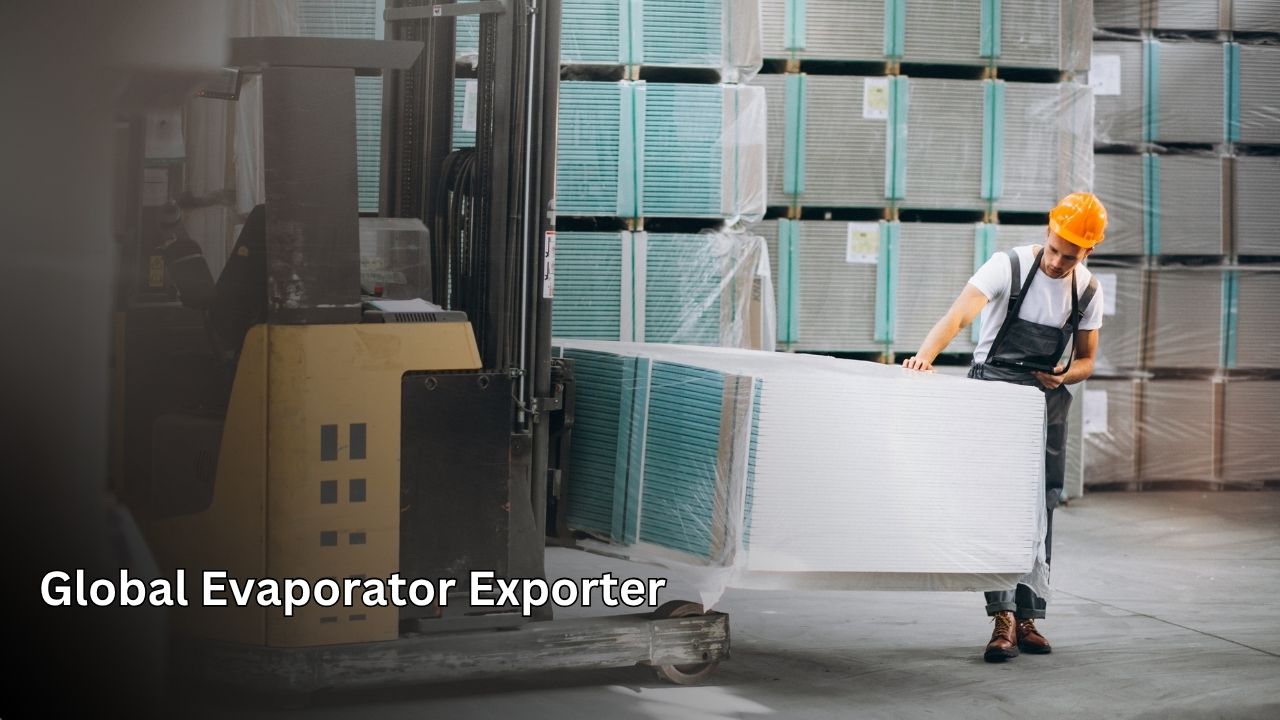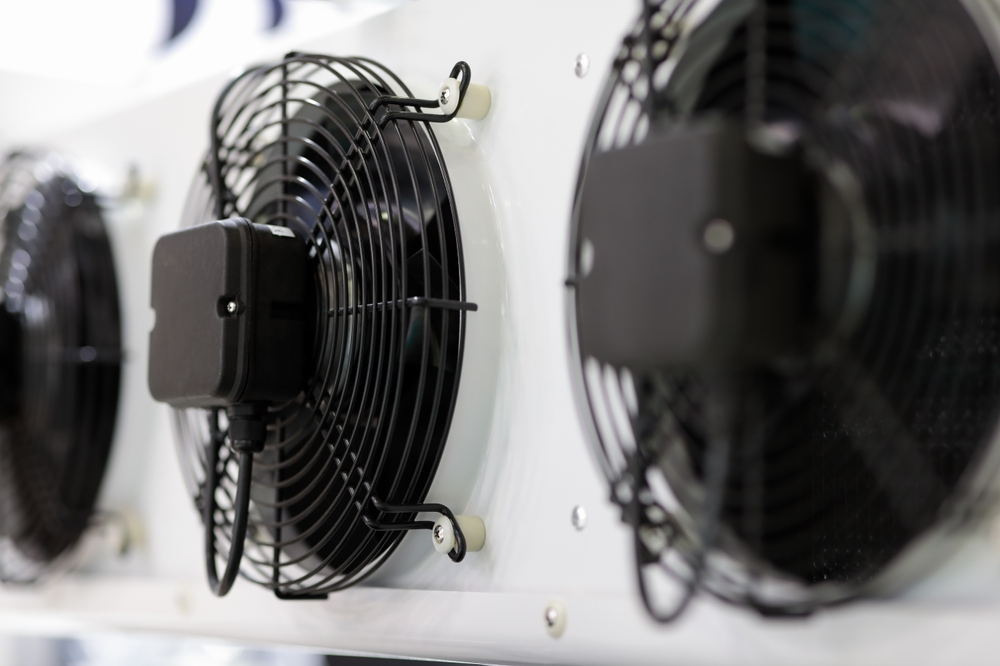Evaporator Exporter
Evaporator Exporter: Your Global Provider of Cooling Technology Solutions
The evaporator, a fundamental component of cooling systems, plays a critical role in both local and international markets. An evaporator exporter delivers these essential components to customers worldwide, offering energy-efficient, eco-friendly, and high-quality solutions. In this article, we will explore the working principles of evaporators, export processes, their types, global applications, key considerations for selecting an evaporator exporter, and innovative trends in international markets. Our goal is to provide comprehensive and up-to-date insights into cooling systems, helping your business identify the most suitable solutions for global markets.
What Is an Evaporator and How Does It Work?
An evaporator is a heat exchanger in cooling systems that enables the evaporation of liquid refrigerant, absorbing heat from the surrounding environment. This process cools the environment and is a core step in the refrigeration cycle. The evaporator allows low-pressure liquid refrigerant to absorb heat and transition into a gaseous state. During this process, heat is transferred from the air or liquid in contact with the evaporator’s surface. For example, in a refrigerator, the evaporator produces the cool air that keeps the interior chilled. Similarly, in an air conditioning unit, it cools warm air to create a comfortable indoor environment. The efficiency of an evaporator directly impacts the system’s overall performance, which is why an evaporator exporter focuses on exporting products that meet international standards, with high heat transfer coefficients and energy efficiency.

Types of Evaporators and Export Characteristics
Various types of evaporators are designed to meet specific application needs. An evaporator exporter evaluates this diversity to provide solutions tailored to the demands of global markets. Here are the most common evaporator types and their key export characteristics:
- Bare Tube Evaporators: Featuring a simple and cost-effective design, these evaporators are typically used in small-scale cooling systems. Ideal for household refrigerators, their affordability makes them popular in developing markets. Exporters prioritize cost-effective, standardized models for this category.
- Forced Air (Finned) Evaporators: Equipped with fans to rapidly circulate air, these provide uniform cooling. They are commonly used in commercial cooling systems, such as supermarket cold storage units. Exporters offer models optimized for fan integration and airflow efficiency.
- Plate Evaporators: Known for their compact design and high heat transfer efficiency, plate evaporators are popular in industrial applications requiring energy savings. Exporters supply stainless steel plate models that meet stringent global quality standards.
- Flash Evaporators: Designed for concentrating high-viscosity liquids, these are widely used in the food industry for processing fruit juices or dairy products. Exporters focus on models with high-pressure resistance and corrosion protection.
- Falling Film Evaporators: Ideal for concentrating large volumes of liquid, these create a thin liquid film to optimize heat transfer. Exporters provide energy-efficient models for large-scale applications.
- Dry Expansion Evaporators: These enable controlled refrigerant evaporation, suitable for systems requiring precise temperature control. Exporters supply models with integrated sensors and precision valves.
- Cellulosic Evaporators: These perform well in humid environments and are often used in marine or high-humidity industrial settings. Exporters source models with humidity-resistant coatings.
This diversity enables an evaporator exporter to deliver solutions tailored to various global markets. In the export process, factors such as material quality (stainless steel, aluminum, or copper), heat transfer coefficient, system pressure, and refrigerant type significantly influence evaporator performance. For instance, stainless steel evaporators offer corrosion resistance, while copper tubes provide superior thermal conductivity.
Evaporator Export Processes
An evaporator exporter manages the process of delivering evaporators from manufacturers to international customers. This process typically includes the following stages:
- Market Analysis: The exporter analyzes the sectoral needs and technical requirements of target markets. For example, European markets demand high energy efficiency, while Asian markets may prioritize cost-effective solutions.
- Product Certification: Exported evaporators must comply with international standards (e.g., ISO 9001, CE, ASHRAE). Certification ensures reliability in global markets.
- Quality Control: Evaporators are tested for leak-tightness, pressure resistance, and heat transfer performance. Pre-export quality checks enhance customer satisfaction.
- Customs and Logistics: The exporter navigates customs procedures and optimizes logistics to ensure secure and timely delivery of products.
- Customer Support: Exporters provide technical support for installation, operation, and maintenance to international clients. For example, an evaporator exporter may guide clients on selecting energy-efficient models.
These processes ensure that evaporators are exported in compliance with high-quality global standards. For instance, global exporters like Alfa Laval lead in supplying plate evaporator systems with efficient export management.
Global Applications of Evaporators
Cooling systems are widely used across various industries worldwide, and evaporators form the backbone of these systems. Here are the key industries and example applications where evaporators are essential in global markets:
- Domestic Cooling: Refrigerators and freezers rely on evaporators to maintain cold interiors. Energy-efficient evaporators are in high demand in European and North American markets.
- Commercial Cooling: Cold storage units, display cases, and beverage coolers in supermarkets use fan-assisted evaporators. Demand for these systems is growing in the Middle East and Africa.
- Industrial Cooling: Chemical, pharmaceutical, and food processing plants use evaporators for large-scale cooling and concentration processes. For example, South American food processing facilities require specialized evaporators.
- Air Conditioning Systems: Air conditioners and HVAC systems rely on evaporators to cool warm air. VRF systems are popular in the Asia-Pacific region.
- Food and Beverage Industry: Flash evaporators are used to concentrate liquids like fruit juices, dairy products, wine, and beer. These systems are prevalent in European and Australian markets.
- Marine and Transportation: Evaporators are critical in cold chain logistics, preventing spoilage during long-distance transport. Asia’s maritime sector shows significant demand for evaporators in reefer containers.
- Energy Production: Some power plants use evaporators to recover waste heat, improving energy efficiency. This is particularly relevant in Europe’s renewable energy-focused markets.
This broad range of applications highlights the need for an evaporator exporter to provide solutions tailored to global market demands. For example, companies like Ahmet Yar in Türkiye export specialized evaporators for the food industry, addressing unique international needs.
Key Considerations When Choosing an Evaporator Exporter
Selecting the right evaporator exporter is critical for your business’s success in international markets. A poor choice can lead to energy losses, high costs, or delivery delays. Here are key factors to consider when choosing an exporter:
- Product Quality: Ensure the exporter provides high-efficiency, eco-friendly evaporators manufactured with cutting-edge technology. For example, Alfa Laval’s plate flash evaporators are recognized as a global quality benchmark.
- International Standards: Exported products must comply with standards like ISO 9001, CE, or ASHRAE.
- Customization Capabilities: Different markets have varying needs. The exporter should offer tailored solutions, such as custom evaporators for food processing plants.
- Logistics and Delivery: The exporter must have a robust logistics network to ensure secure and timely delivery.
- After-Sales Support: International clients require installation, maintenance, and repair services. Exporters offering 24/7 technical support are preferred.
- Market Experience: The exporter’s experience and references in target markets demonstrate reliability. For example, Frigo Block is recognized globally with 35 years of expertise.
- Competitive Pricing: Exporters offering competitive prices while maintaining quality have an edge, especially in developing markets.
These criteria help you select an evaporator exporter that ensures success in global markets.
Innovations and Future Trends in Evaporator Exports
In recent years, evaporator exporter companies have focused on technological innovations and sustainability-driven solutions. Here are the latest trends and future expectations in evaporator exports:
- Energy Efficiency and Eco-Friendly Products: Next-generation evaporators consume less energy while delivering high performance. The use of low global warming potential (GWP) refrigerants like R32 and R1234yf is increasing.
- Smart Control Systems: IoT-enabled evaporators offer remote monitoring, data analytics, and automated optimization, particularly in demand in European markets.
- Compact and Modular Designs: Plate evaporators and flash evaporators occupy less space while maintaining high efficiency, ideal for Asia’s space-constrained facilities.
- Recycling and Sustainability: Exporters prioritize evaporators made with recyclable materials, such as stainless steel, to offer eco-friendly solutions.
- Artificial Intelligence and Automation: AI-based control algorithms optimize energy consumption and enhance performance.
- Hybrid Systems: Evaporators integrated with renewable energy sources, such as solar-powered cooling systems, are gaining traction in Africa.
- Nanotechnology Applications: Nanocoatings reduce corrosion on evaporator surfaces, improving heat transfer efficiency and longevity.
These trends position an evaporator exporter at the forefront of global competition. For example, Günay Heat Exchangers stands out with its energy-efficient and sustainable solutions in international markets.
Evaporator Maintenance and Performance Optimization
Evaporators in cooling systems are susceptible to dust, dirt, corrosion, and other contaminants, which can reduce performance and increase energy consumption. Regular maintenance is essential for long-term efficiency and durability. Here are key maintenance steps for evaporators:
- Surface Cleaning: Dust and dirt buildup on evaporator surfaces reduces heat transfer efficiency. Periodic cleaning prevents performance losses.
- Sensor and Control System Checks: Evaporator sensors play a critical role in managing the refrigeration cycle. Faulty sensors can compromise system efficiency.
- Refrigerant Levels: Maintaining the correct refrigerant level is vital for optimal evaporator performance.
- Corrosion Prevention: Even with corrosion-resistant materials like stainless steel, regular corrosion checks are necessary.
- Professional Technical Support: Periodic inspections by expert technicians extend system lifespan.
- Energy Consumption Analysis: Monitoring evaporator energy usage helps optimize performance and reduce costs.
- Airflow Optimization: In fan-assisted evaporators, ensuring unobstructed airflow is critical for uniform cooling.
These maintenance steps extend the lifespan of an evaporator and optimize energy costs. For example, regular maintenance of a plate evaporator can reduce energy consumption by up to 20%.
Impact of Evaporators on Energy Efficiency
Energy efficiency is a top priority in modern cooling systems design, and evaporators significantly influence overall energy consumption. A high-efficiency evaporator reduces operating costs and environmental impact. For instance, optimized heat transfer surfaces and low-pressure drop designs minimize energy usage. Materials like copper and aluminum enhance efficiency by improving heat transfer, allowing the system to operate with less energy.
An evaporator exporter leverages innovative materials and designs to provide competitive advantages in global markets. For example, microchannel technology achieves higher heat transfer in smaller surface areas.
Environmental Impact and Sustainability of Evaporators
Today, evaporator exporter companies prioritize solutions that reduce environmental impact. Due to the global warming potential of refrigerants, low-GWP options like R1234yf and CO2 are becoming standard in next-generation evaporators. Additionally, the use of recyclable materials, such as stainless steel and aluminum, supports sustainability while ensuring durability.
The energy efficiency of evaporators reduces carbon footprints, enabling businesses to meet environmental responsibilities. For example, a food processing plant using an energy-efficient evaporator can significantly lower its annual CO2 emissions.




